To add the Microsoft Teams channel to your Bot, you will need to create a Bot in Microsoft Bot Framework account to configure the connection between Microsoft Teams and Kore.ai. To add the Microsoft Teams channel to your Bot, you will need to:
- Register the Bot – You will need to create a Bot in Microsoft Bot Framework by adding all the Bot details and creating the App ID and Password. To register the Bot, you must have created and registered for a free account in the Microsoft Bot Framework developer portal.
- Enable Channel – After registering the Bot, you need to enable the channel.
- Publish Channel – After the channel is enabled and all configurations are verified, you can optionally publish the Bot to make the Bot available for developers.
To add Microsoft Teams channel
-
- In the Bots section of the Bot Builder, click the Bot that you want to add the Microsoft Teams channel to.
- On the Channels tab, click the Microsoft Teams icon. The Microsoft Teams channel page gets displayed.
- To enable this bot on Microsoft Teams, you need to register it with Microsoft Bot Framework. Login to Microsoft Bot Framework portal and navigate to My Bots section and click on Create a bot.
- On the subsequent page, go to Bot Channels Registration in the Bot Service panel and click Create to set up the Bot profile.
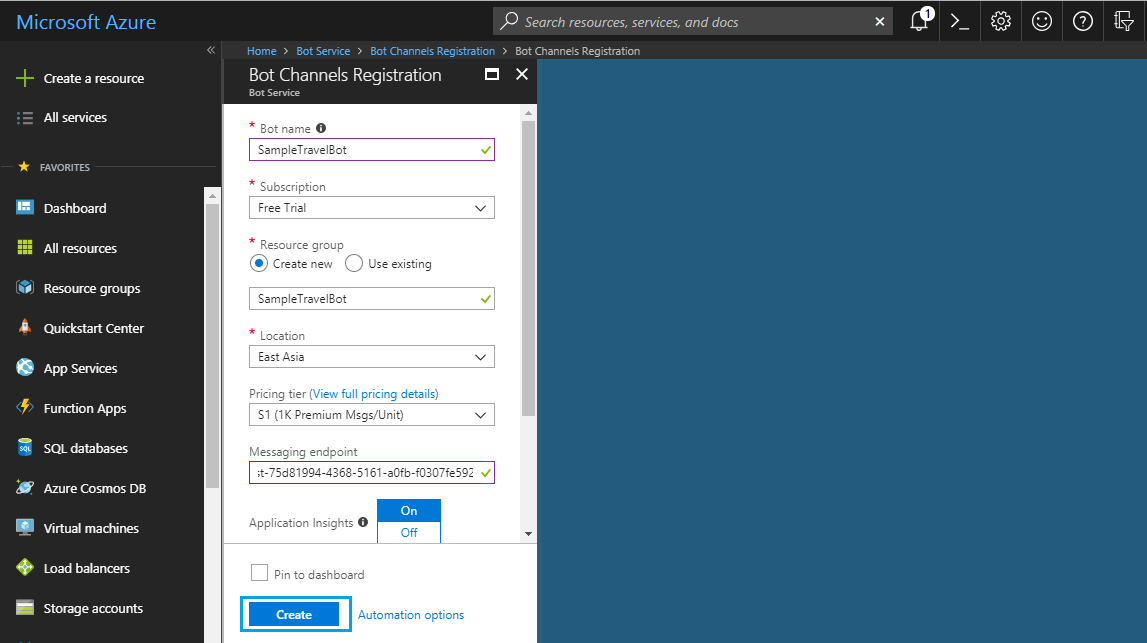
- Enter all the relevant details for Bot profile. Copy the Webhook URL from the Configuration tab of the Microsoft Teams channel page and enter it in the Messaging endpoint field on the Bot profile page.
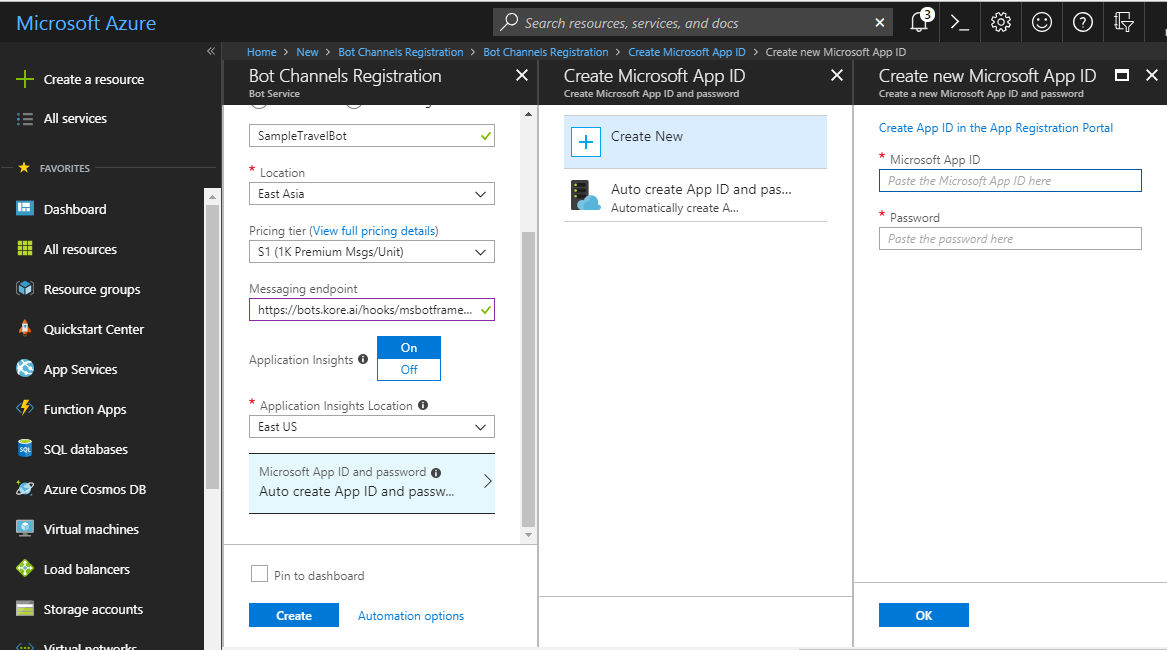
- While on the Bot Profile page, click on Create Microsoft App ID and password. A new Microsoft App ID will be auto-assigned and displayed.

- Now click on Generate an app password to continue. Make a note of the password generated and enter it in the Configurations tab of the Microsoft Teams channel window. Click Ok to go back to the previous screen. Make a note of the App ID and enter in the Configuration tab of the channel page.

Note: The only time the full password is displayed is when it is generated and displayed in the Generate Password dialog. Copy and save the password to a secure location until added to the Microsoft Teams Channel page in Bot Builder
- Click on Finish and go back to Bot Framework to return to the previous screen. Click Register to complete the App creation.
- After creation of the app, you would be redirected to Connect to channels page. Bot Framework enables Microsoft Teams channel by default. Click on Microsoft Teams Channel icon in the Add a Featured channel section.
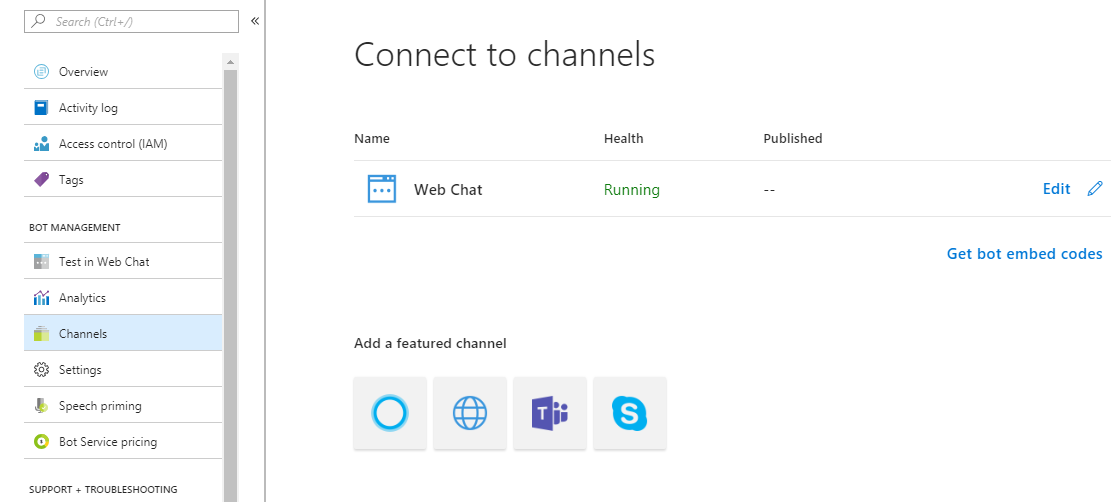
- A confirmation screen will be opened to inform that the bot is now enabled for Microsoft Teams channel.
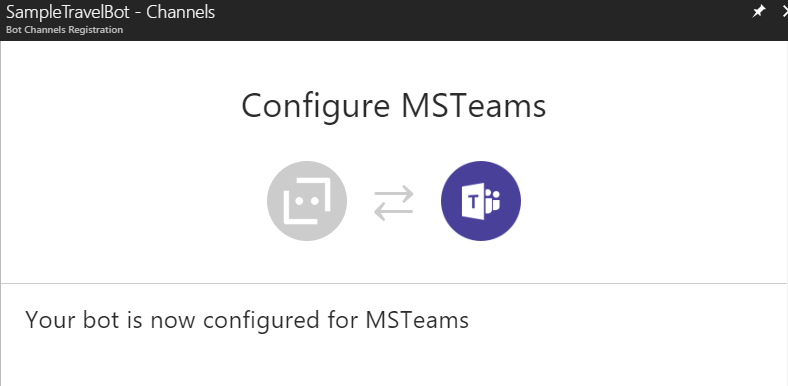
- Navigate to the Configuration tab of the Microsoft Teams channel page to update or review the app configurations and enable the channel.
Note: “Web Chat” option of Bot Framework is not supported.
Editing the Microsoft Teams Channel
To edit the Microsoft teams channel, hover your mouse over the channel and click to modify. You can make necessary updates to your channel configurations and save them. You may also disable or delete the channel information by clicking the Settings icon.
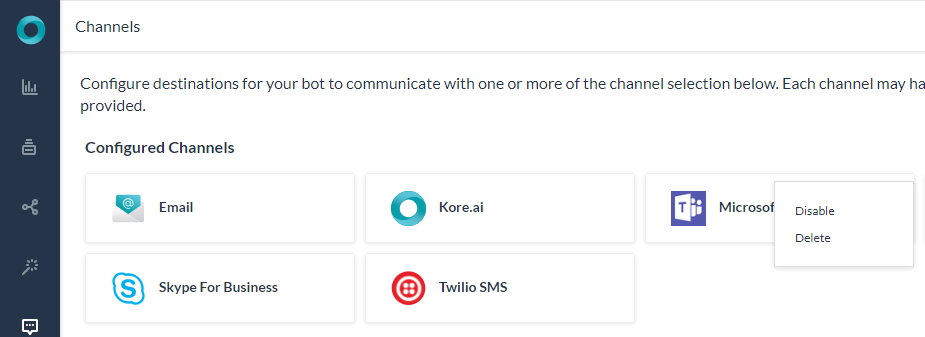
Select one of the following commands to modify the channel:
- Disable/Enable – Click Disable to temporarily disable use of the Microsoft teams channel for your Bot.To enable use of the Microsoft teams channel, Click Enable.
- Delete – Click Delete, and then click OK in the Delete Confirmation dialog to permanently delete the Bot channel configuration.
Warning: This operation is permanent, and cannot be undone.
